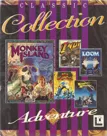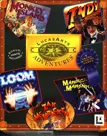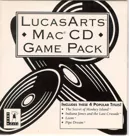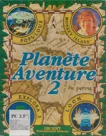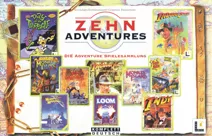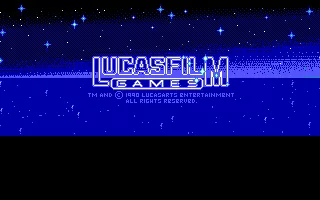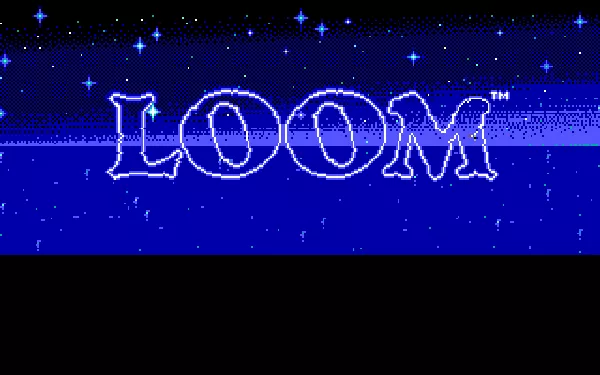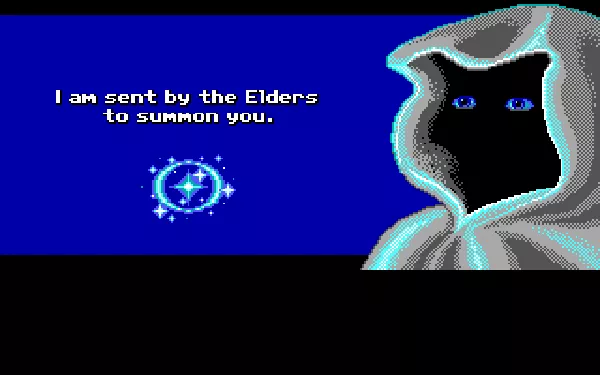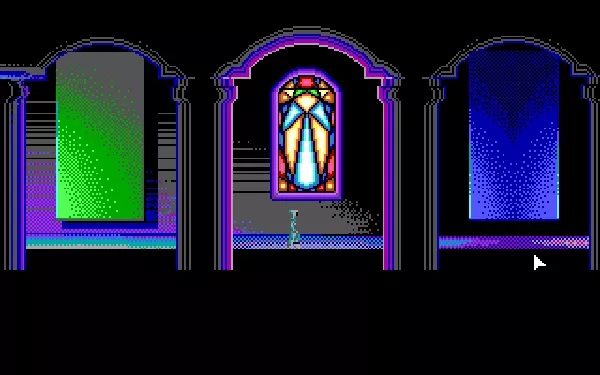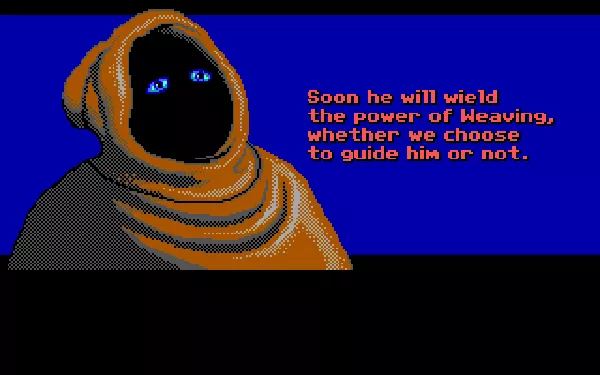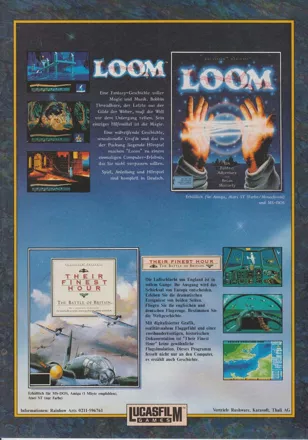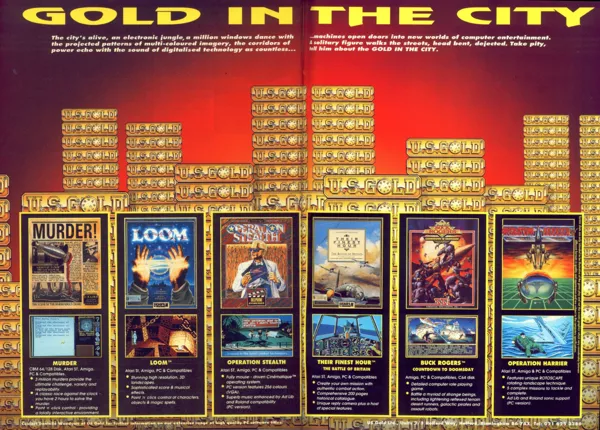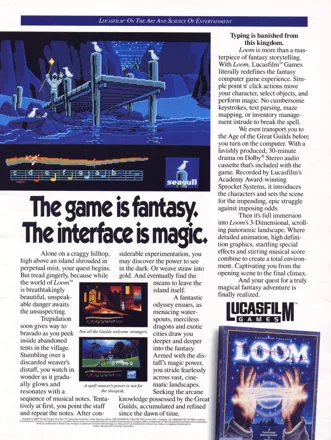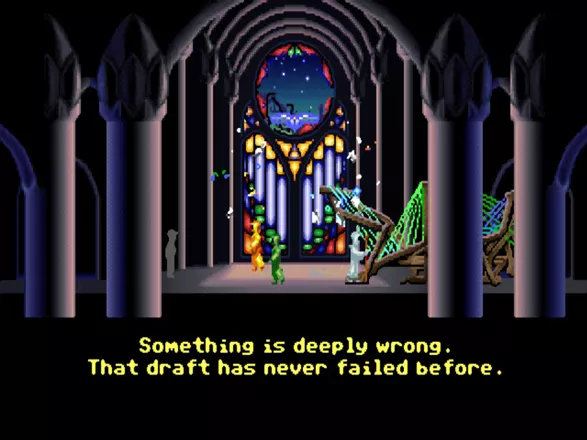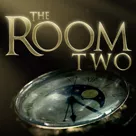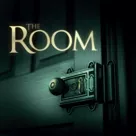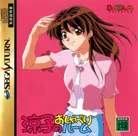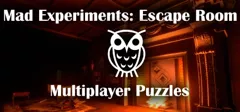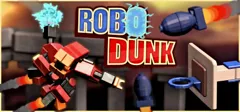Loom
Description official descriptions
The Age of the Great Guilds has arrived. Communities and states comprised of people united by a common trade were created. The Guild of Weavers has achieved such mastery in their trade that they discovered the secret of weaving the very fabric of reality. They were treated with suspicion by other guilds, who eventually accused them of practicing witchcraft and banned them to a secluded island, which they called Loom.
Bobbin Threadbare is a young man from the Guild of Weavers. He is outcast from the guild and blamed for the lack of prosperity in recent times, though he does not know why. On his seventeenth birthday he is summoned by the Elders of the guild, who intend to decide his fate. However, shortly thereafter all the inhabitants of the village except Bobbin are turned into swans. Bobbin finds out that he is the child of the Great Loom, found by Lady Cygna, who tried to use the loom's powers to save the guild. Bobbin's stepmother Dame Hetchel teaches him the art of weaving magical drafts, and Bobbin embarks on a journey to find the lost flock, and the answers to his questions.
Loom is an adventure game that sets itself apart from other titles in the genre through its unique gameplay system: the player character does not carry items around, but rather manipulates objects through the use of spells (called "drafts" in the game). The drafts themselves are woven by playing magical notes on a special instrument called "distaff". All the puzzles in the game are solved by learning and correctly applying these drafts.
Each draft is a sequence of four notes within one octave. The player learns new drafts by exploring the environment and interacting with it through a simple point-and-click interface. Once a draft has been learned, it may be applied in a different situation in order to solve a problem. Drafts range from simple general actions (such as opening) to more specific and complex commands, e.g. turning straw into gold. Drafts can also be "reversed", i.e. played backwards, in order to execute the opposite action (for example, closing something instead of opening). As the game progresses Bobbin learns to play higher notes on the distaff, allowing him to access more drafts.
The game features three difficulty levels, differentiating them by changing the way the interface works. The easiest level displays names of the notes as well as marking the correspondent areas on the distaff; Standard level features the distaff with the marks at the bottom of the screen, but no written notes; whereas Expert does not display the marks at all, requiring the player to memorize and play the drafts by ear.
The CD DOS version of the game has enhanced 256-color graphics, audio tracks, and full voice acting. However, it also removes a few close-up scenes and conversations. The FM Towns version preserves these scenes and includes similar graphical and musical enhancements, but has no voice acting.
Spellings
- האורגים - Hebrew spelling
- ルーム - Japanese spelling
- 紗之器 - Traditional Chinese spelling
Groups +
Screenshots
Promos
Videos
Add Trailer or Gameplay Video +1 point
See any errors or missing info for this game?
You can submit a correction, contribute trivia, add to a game group, add a related site or alternate title.
Credits (DOS version)
123 People (108 developers, 15 thanks) · View all
| A Fantasy by | |
| Project Leader | |
| Lead Design | |
| Characters Designed and Animated by | |
| Visual Effects Animation by | |
| Additional Programming | |
| Conversion / Porting | |
| Interpreter / Development System | |
| Graphics / Artwork | |
| Additional Graphics / Artwork | |
| Music by | |
| Music | |
| [ full credits ] | |
Reviews
Critics
Average score: 78% (based on 49 ratings)
Players
Average score: 4.0 out of 5 (based on 295 ratings with 19 reviews)
If this game was a girl, I'd marry it (...uh her).
The Good
EVERYTHING.
To be serious, this is not just a game. To consider this a to be just another game would definitly be an insult. I've played a lotta games in my time, and this as the other guy said, would probably be the best game ever created for all time.
Why? Pure and simple.
The storyline. Never have seen a story line so touching, compasionate, loving. And this is a guy saying this.
Ever felt good about yourself? This game gives you that and more when you finish it.
Whoever made this one was definitly not human...
The Bad
All those tough puzzles in the end was worth it in the end...
The Bottom Line
A game, a story, a ballad.
About a struggle for others, about sacrifice, about compassion.
Its about pure excellence.
DOS · by Indra was here (20746) · 2001
The Good
Yes it's charming and imaginative, but lots of older VGA adventure games are. What's different about this one is that it's as near as any game has come to being poetry for the computer. The fact that it's short is in its favour. It means the symbolism is stronger and the imagery more powerful, just like a fairy tale or Oscar Wilde's short stories.....plus you can complete it in one sitting which means you don't forget the storyline or why you started playing it at all, which let's face it, happens with some games.
The Bad
You need the CD version. It helps to have Thaikovsky playing as you go.
The Bottom Line
The protagonist turns himself into a swan at the end. What more can I say?? This game can change your life. Why aren't there others more like it?
DOS · by jossiejojo (37) · 2004
A genuine proof of inspiration, talent and creative freedom
The Good
First of all, I would want to clarify you that I played the two PC versions of Loom: the remake first, and then the original. Brief conclusion: play the original 16-colors version. Extended conclusion: the 256-colors version, due probably to audio-tracks limitations, is STRONGLY cut, even though it doesn’t appear to be. Pages of important dialogues were lost, together with subtle lines and cut-scenes which made a richer story. In the end, in the remake we have a rather confusing and inconclusive story for those who have to play it for the first time.
An adventure without inventory? Yes. In fact, there aren’t dialogue options either, and besides we interact by means of sounds which we’ll have to “weave them”. Weave them? Indeed yes. Friends, get ready to try a magical fantasy shaped like adventure, whose inventory are our ears.
The story begins in the audio tapes. Much people say they aren’t necessary, but remember Lucas Arts designed it in this manner originally. Besides, this tapes are easy of to get (go to the-underdogs.org). Also, you’ll need the book of patterns: read it first, as the manual says. Here we personify Bobbin Threadbare, a young born of extraordinary circumstances, in a fantasy world equally extraordinary which is geographically and ideologically divided into guilds (blacksmiths, crystal workers,…). Bobbin belongs to the one of the “Weavers”, who live separate in a island called “Loom” and perform stealthy a fundamental role into the “weave” of universe. Certain omens warn the Apocalypses is coming and someone is behind all of this. Will Bobbin be that “someone” as the Elders say? Well, you’ll have to find it out. I only mention you that also there is a “personal quest” for Bobbin. With this argument, the young innocence and ingenuousness of Bobbin walk through curious, comical and amusing situations, but the story doesn’t doubt to face him with serious tragic moments or truly transcendent circumstances: and here is where the game warns us that its childish and simple impression hides deep emotions and disquieting topics which it subtly invites us to ponder. All, without requesting tons of characters and dialogs, blood, etc; this is named disinterested inspiration, or, an easier way, art.
Although the first impression is an adventure with traditional gameplay (point & click), the thing is much more simple actually, but not less original and entertaining. Bobbin interacts by means of four-musical-notes arrays performed with his “distaff”. As we advance through the game, he (us) is going to learn more advanced “notes” which allow him to perform different actions, from open a door to become invisible. This combinations introduce themselves subtly, which we will have to write them down in our book of patterns (the one of real paper!) since some of this combinations generate randomly in each new game, so NO walkthrough will help us. For example, notes learned in order to “open” a door can serve us to “open” other things, in an extended sense. Also we can use it to “close” if we perform it in reverse way. Thus, a system which could have been used in a boring and simplistic manner, ends creating a challenging and entertaining experience, with lots of clever variants as the game progresses; yet its difficult and complexity don’t even close to the ones of other Lucas Arts’ adventures. In Loom there is no impossible or absurd obstacles: its gameplay is intuitive and fluid, but challenging and satisfying, due to its exquisitely designed and story-integrated puzzles, clear evidence of the natural talent for these matters of Lucas Arts’ people of those years. The “verbal” communication with other characters isn’t complicated either. Simply we double click on them and then we will establish the necessary conversation in order to the story advances, without we could choose any particular line such as in other adventures. Nothing wrong with this. As always, the dialogs are very well written, giving naturalness both characters and events. There are humorous moments, and other ones of absolute seriousness, and dialogs convey this successfully without seem artificial or dissonant.
The visual art is outstanding. Few pixels and few colors didn’t impede that the artists have achieved a beautiful magic world, palpable and well animated.
The game’s main theme is a great piece, very touching if fit in any adjective, and throughout the game small melodies will enhance the emotional nature of each situation exceptionally (this details were lost in the remake).
The Bad
Is it short? Yes, it is. Is it easy? YES, IT IS! Does that really matter? Not at all.
If you are going to play it first time, don’t do it with the remake.
The Bottom Line
Loom is a charming and super-original adventure, result of an era where Lucas Arts had ball…, I mean… “courage” in order to innovate and surprise with its graphic adventures.
Despite of its simplicity, Loom’s gameplay is far more entertaining than lots of super-productions with infinite inventories; and despite of its innocent and silly appearance, its story is far more touching than tons of adventures with “serious and mature” stories appearing out there.
“Close your eyes, and listen…”, because that is how an original adventure should be played. An authentic masterpiece.
DOS · by jorgeabe (13) · 2007
Discussion
| Subject | By | Date |
|---|---|---|
| freeware ? | Wormspinal (619) | Feb 7, 2008 |
Trivia
1001 Video Games
Loom appears in the book 1001 Video Games You Must Play Before You Die by General Editor Tony Mott.
Cancelled sequels
Apparently the Loom sequels were NOT cancelled due to poor sales. According to Brian Moriarty (post):
Contrary to popular belief, the LOOM sequels were not abandoned because LOOM didn't sell well. LOOM has sold more than half a million copies in various formats since it was published in 1990. The reason the sequels weren't made is because I decided I wanted to work on other things, and nobody else wanted to do them, either.
Graphics
At the time Loom came out for the PC, it was pushing the edge of what could be done with graphics cards. Many people bought it primarily to show off what their fancy new graphics card and SoundBlaster could do.
Hebrew version
Loom was actually translated and released in Israel in a Hebrew version, which unfortunately did not include the 30-minute audio cassette.
Manual
Loom came with the "Book of Patterns", a beautiful booklet containing description and history, drawings and a place to write the notes, of many "drafts", meaning spells. Many of the drafts in the Book of Patterns do not appear in the game at all, such as Folding, Waterproofing, Blessing and Aphrodesia.
The manual has a passage that reads:
We believe that you buy games to be entertained, not to be whacked over the head every time you make a mistake. So we don't bring the game to a screeching halt when you poke your nose into a place you haven't visited before. Unlike conventional computer adventures, you won't find yourself accidentally stepping off a path, or dying because you've picked up a sharp object.
We think you'd prefer to solve the game's mysteries by exploring and discovering, not by dying a thousand deaths. We also think you like to spend your time involved in the story, not typing in synonyms until you stumble upon the computer's word for a certain object.
This is possibly a not-so-subtle jab at most Sierra adventure games published up until the time this passage was written.
Radio drama
The original Loom (not the CDROM re-release) was packed with a 30 minute drama on cassette, adding much depth to the story.
References
The three elders who appear in the beginning of the game are named after the three Moyras of the Greek mythology - Kloto, Athropos, and Lachesis.
References to the game
-
In the game Monkey Island, another game created by LucasArts, if you enter the bar at the beginning of the game one of the pirates is wearing a button with LOOM written on it. All he says is "Aye," but if you talk to him about Loom, he will give you a lengthy and rather blunt advertising plug. This is another example of LucasArts off the wall humor.
-
The seagull seen eating a seashell in Loom has made several appearances in later LucasArts games, such as The Secret of Monkey Island (on the dock outside the Scumm Bar's kitchen) and Monkey Island 2: LeChuck's Revenge (on the top of the pile of maps).
-
Loom was parodied in Space Quest IV by Sierra. Roger Wilco browses games at the store, among them are one called "Boom" with the following description:
The latest bomb from master storyteller Morrie Brianarty, BOOM is a post-holocaust adventure set in post-holocaust America after the holocaust. Neutron bombs have eradicated all life, leaving only YOU to wander through the wreckage. No other characters, no conflict, no puzzles, no chance of dying, and no interface make this the easiest-to-finish game yet! Just boot it up and watch it explode!
ScummVM
Still got a copy of Loom lying around somewhere? Have you been desperately wanting to play it, but can't get it to work on modern systems? If so, check out a program called ScummVM, an ingenious program that lets you run Loom and other classic LucasArts (as well as a few other) adventure games. It's free and 100% legal as long as you use an original copy of the game.
Secrets
There is a bonus cutscene that plays near the end of the game (when you return to the island). This scene only plays if you are playing at expert proficiency mode.
Soundtrack
Apparently an ultra-rare Japanese re-arrangement of the soundtrack was sold by Brian Moriarty on eBay for $238.03. According to the seller:
Here's the story behind this unusual disc: In late 1990, the Japanese record company Meldor approached Lucasfilm. They wanted to produce a pair of soundtrack CDs based on Lucasfilm games. The first disc was to be a collection of songs from Maniac Mansion, Zak McKracken and a few other titles. The second disc was to be devoted entirely to Loom.
Engineers arrived from Japan, made copies of the game soundtracks and disappeared over the Pacific. Months passed. Eventually, a handful of sample CDs was delivered to the game designers at Lucasfilm. This auction is for one of those sample discs. No other copies are known to have escaped from Japan!
An enhanced soundtrack (with an added overture not heard in the original version) for Roland MT-32 was written by George Alistair Sanger (The Fatman). As of 1999 it could be downloaded from Lucasarts' website.
The music heard in Loom is actually taken from Tchaikovsky's ballet "The Swan Lake" -- a pretty appropriate choice, considering the part swans have in the game's storyline. Pyotr Ilyich Tchaikovsky's Swan Lake, a romantic ballet composed in 1875 and 1876, consists of over 50 movements. As a shortcut for those keen on hearing orchestral renditions of the Loom music, here's a list of the in-game pieces (in order of appearance) and the movements they correspond to:
```
Loom Theme Act 1 No. 4: Pas de trois: I. Intrada: Allegro The Elders' Council Act 4 No. 27: Danses des petits cygnes: Moderato Crystalgard (The City of Glass) Act 2 No. 13: Danses des cygnes: IV. Allegro Moderato The Shepherds / The Dragon Cave Act 1 No. 6: Pas d'action: Andantino Quasi Moderato The Blacksmiths' Guild Act 1 No. 4: Pas de trois: IV. Moderato The Cathedral Act 1 No. 4: Pas de trois: II. Andante sostenuto The Loom (Finale) Act 2 No. 14: Scene: Moderato
```
Version differences
-
This is one of many wonderful early CD games where the audio is stored onto a Redbook audio track. If you drop the Loom CD into your CD player, you can listen to the dialogue and music. It's especially fun to hear all of the little one-liners from Bobbin back-to-back: "I guess that isn't a draft," "That thread's too high for me," "I like the view from the cliff better," ad nauseum... :)
-
The CD version of the game, in what was an apparently limited edition, included a much higher quality version of the original audio casette with (apart from the story itself) also included additional instrumental music. The dialogue varies quite a bit between the CD-ROM and original diskette versions of the game. It had to be rewritten in order to condense it enough to fit onto one CD-Audio track. During two sequence later in the game, blood and corpses were removed.
-
Loom was also ported to a Japanese computer called FM-Towns, it had the graphics of the VGA version and the dialogue of the EGA version (cue heavenly angels singing...). It was released in two languages--Japanese and English. Be warned, next to impossible to find. It version had all of the music from the 16-color version in CD quality (and able to play indefinitely). It had no voice acting, but all art from the disk version (including character close-ups) was in 256 colors and used in-game. The original dialogue from the disk version also remained. During one sequence later in the game, a puddle of blood was removed.
-
Loom had one console port: a PC Engine SuperCD (Turbo Duo in the U.S.) version. Although the PC Engine version was a CD based version, it isn't a port of the PC CD-ROM version. Instead, it's a port of the floppy version (all of the dialogue and everything is straight out of the floppy version, in fact) with enhanced CD music. There's no spoken dialogue anywhere, but that doesn't stop the fact that it was one of the better LucasArts console ports.
-
The 30-minute Audio Drama that was included on audio cassette was ALSO included on specially marked boxed-editions of the CD-ROM, as a second CD. The audio drama is presented in reference-quality stereo sound on the second disc.
-
The Windows CD version, to accommodate the size of the speech files, heavily rewrote and condensed the disk version's dialogue. Also, a lot of animation from the 16-color version was not used in this one (including the close-ups, which are still in the resource files on the CD.) In addition, music did not play over long periods like in the disk version, but only occurred briefly, during cutscenes.
-
The original 16-color diskette version of Loom had several lengthy music tracks from "Swan Lake" and closeups of the characters' faces in cutscenes.
-
There were actually two different 256-color versions: a VGA CD port for the FM Towns computer in Japan (in English and Japanese), and the more familiar CD version for Windows with full speech.
Awards
- Amiga Power
- May 1991 (issue #00) - #72 in the "All Time Top 100 Amiga Games"
- Computer Gaming World
- September 1990 (Issue #74) – Special Award for Artistic Achievement
- November 1996 (15th Anniversary Issue) - #81 in the "150 Best Games of All Time” list
- Power Play
- Issue 01/1991 - Best Graphics in 1990 (DOS version)
- ST Format
- Issue 01/1991 – #7 Best Adventure Game in 1990 (Atari ST)
Information also contributed by -Chris, Adam Baratz, Apogee IV, ArtfulGamer, ATMachine, Bizboz, Ingsoc, Mickey Gabel, NatsFan, PCGamer77, Satoshi Kunsai, Seer, Swordmaster, Tomer Gabel, Trixter, Unicorn Lynx, weregamer, willyum and Zovni
Analytics
Upgrade to MobyPro to view research rankings and price history! (when applicable)
Related Sites +
-
Hints for Loom
These hints by Robert Norton will get you through the game without spoiling it for you. -
LucasArts' Secret History
A multi-article feature about the game by the LucasArts news site, The International House of Mojo. The feature article includes an unscored review, short responses written by members of the site's community, trivia, downloads and other such resources, a feature article arguing for an interactive fiction understanding of the game, the reflections of a few of the developers, and a narrative walkthrough. -
ScummVM
supports Loom under Windows, Linux, Macintosh and other platforms. -
Unused Graphics from the DOS CD version
Images from the DOS CD version of Loom that are not used in the actual game but are still in the resource files. -
Walkthrough for Loom
All actions needed to complete Loom - step by step and all at once. -
Wikipedia: Loom
article in the open encyclopedia about the game
Identifiers +
Contribute
Are you familiar with this game? Help document and preserve this entry in video game history! If your contribution is approved, you will earn points and be credited as a contributor.
Contributors to this Entry
Game added by Eurythmic.
Windows added by Picard. Amiga added by POMAH. Linux added by click here to win an iPhone9SSSS. Atari ST added by ektoutie. Macintosh, TurboGrafx CD, CDTV added by Kabushi. Antstream added by lights out party. FM Towns added by Terok Nor.
Additional contributors: Tomer Gabel, Unicorn Lynx, Jeanne, Sciere, Hitman23, Zeppin, Macs Black, Petr Maruska, Paulus18950, Patrick Bregger, Rik Hideto, Jo ST, FatherJack.
Game added July 22, 1999. Last modified August 2, 2024.



